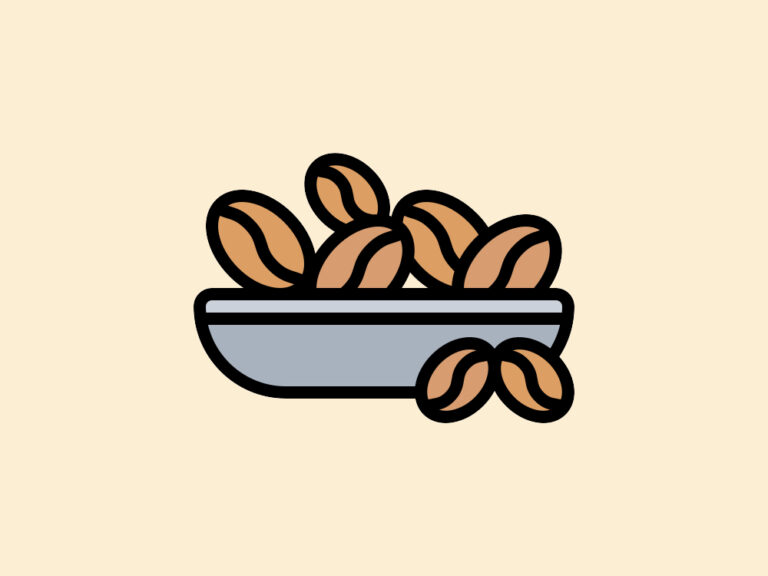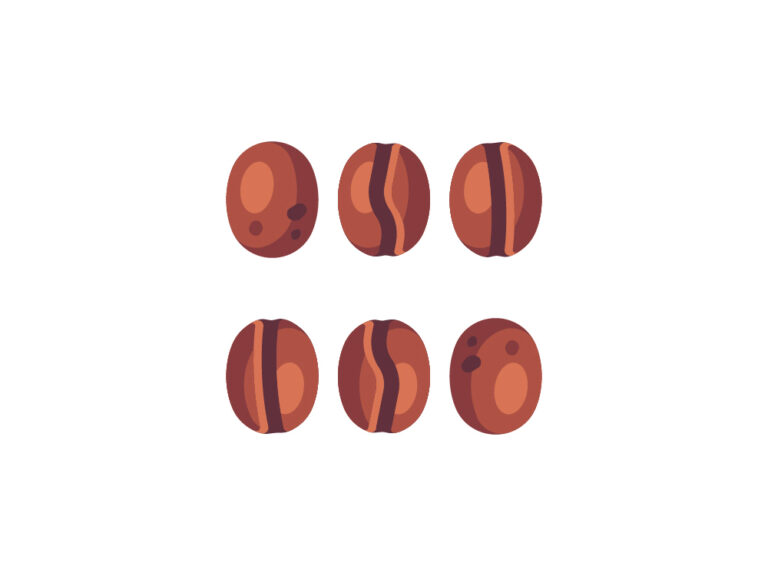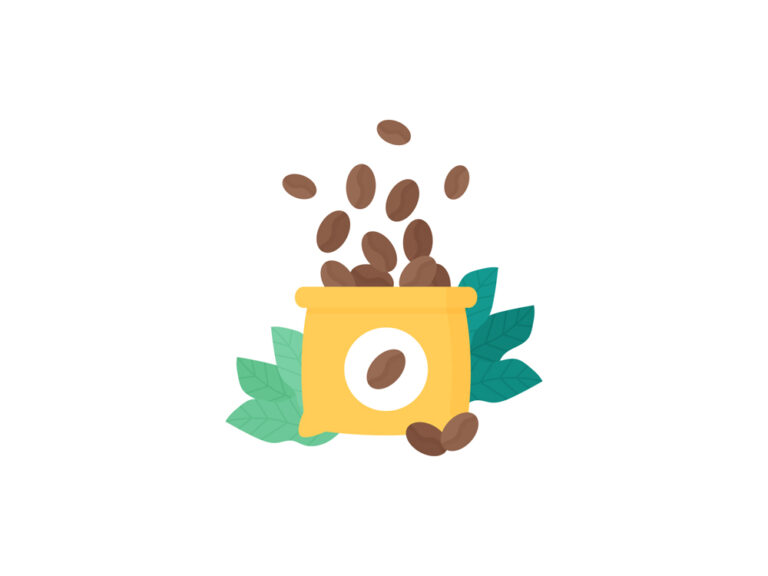
This post may contain affiliate links. As an Amazon Associate and a partner of other brands, I get a small commission if you purchase through my links, at no extra cost from you.
Just heard of blonde roast coffee?
Interested in learning how to make an absolutely delicious cup of coffee?
You’re in luck!
The following article will provide you with all the pertinent information you’ll need to become a bonafide coffee expert.
The first stop on our visit to the world of blonde roast is determining what, exactly, it is.
Let’s get started!
What Is Blonde Roast Coffee?
Blonde roast coffee is simply as its name implies: coffee that has been lightly roasted until it has that blonde brown color.
Coffee beans have a natural affinity for moisture and oils, so they tend to stick together in “chunks” when they’re roasted.
A blonde roast coffee’s lighter roasting process means that it’s cooked less, meaning that the coffee chunks are more loosely bound when they come out of the roaster.
In other words, a blonde roast coffee usually has less surface area when compared to a darker roast.
This means it’ll actually extract less flavor in your cup when you make a cup of coffee with it.
So in general, a blonde or light roast is going to yield a weaker flavor than its dark roast counterparts.
With that said, just keep in mind that a blonde roast coffee is never stronger than any other roast.
A light-roast coffee’s flavor is just different than the flavor of darker roasts, but it’s never stronger.
The overall flavor of this type of drink is lighter than the blend you’d find in regular coffee.
It is sweet-scented and has malty, nutty notes; it’s not overly bitter or robust like some darker roasts.
The color is also paler than that of your average cup of joe, typically ranging from blonde to light brown (not black).
A Little Bit of History
Blonde roast coffee has been around for quite some time.
All the way back in the early 1900s, when coffee was considered little more than a novelty drink, people were experimenting with all sorts of ways to drink it.
It wasn’t until the 1940s that someone had the brilliant idea of combining milk and espresso into an iced beverage that could be served on a hot summer day.
Cappuccino was born, and Cappuccinos started pouring throughout Italy.
Coffee gets its color when it’s roasted, but it’s the way they roast the beans that makes the distinction between light- and dark-roast coffee.
Dark Roast
The darker roasts are what most people think of when they think of “coffee.” These are numerous variations on a theme, including Arabica (darker than Robusta), Columbian (darker than Mexican) and French (darker than Indonesian).
They’re all dark in color, ranging from almost black to medium brown; some even go so far as to have some red or orange hues.
Light Roast
Light roasts, on the other hand, differ from their darker counterparts in two major ways; they tend to be milder and less bitter.
This type of coffee has higher acidity and contains less caffeine than darker roasts of coffee.
The flavor profile is also lighter and sweeter than that of a dark roast.
Those are the basics on what light- vs. dark-roast coffee is; now we turn our attention to some more information on the blonde roast coffee.
What Are Some Blonde Roast Coffee Choices?
The international trend over the past decade is to now roast darker coffee beans in the hopes of getting a richer flavor.
However, some companies are starting to realize that light-roasted coffee has its advantages—namely, that it’s mouthwatering with no bitter aftertaste, and it’s also less expensive to produce.
More recently, many premium brands have begun sourcing light-roasted beans from regions like Chiapas in Mexico or Costa Rica, using intense heat treatments without any chemicals or additives.
This adds up to coffee you can enjoy without the jitters you get from most dark-roasted coffee.
There are a wide variety of flavors to choose from, including:
Arabica – A bright and bright-green bean that is better known as the “original” or “best cup.”
It makes the most flavorful coffee and has a full body.
Robusta :
An extremely robust bean grown throughout Africa and other parts of Central and South America.
It can be roasted to different shades of brown, but it’s generally roasted darker than Arabica beans for more intense flavor.
Kenyan:
A popular alternative to Arabica beans, this variety is rich in taste with less bitter aftertaste.
Ethiopian :
A favorite for those who like to drink their coffee with milk; it’s gentle on the palate.
Do Keep in Mind That…
A blonde roast coffee is not really the same as light-roast coffees.
It’s lighter than a light roast, be it in color or in flavor.
The Blonde Roast Coffee Process
Before the blonde roast reaches your cup, all sorts of processing must take place to get it ready for consumption.
Along the way, the beans grab onto the products that they’re in contact with and thus, in turn, become one of two things: a “seed” or a “bean.”
Seed:
This stage of the process is when roasted coffee goes from bean to seed.
When coffee is roasted, the beans are removed from the surrounding environment, which causes the natural oils to become dried out.
This means that if any bacteria or other contaminants are still present, they’ll have a chance to breed and cause spoilage.
As such, it’s important that coffee seeds are kept in contact with air (and thus oxygen) to keep them fresh for longer periods of time.
Bean:
The bean stage of the process is when the seeds are ready for degassing.
Coffee beans are, however, still vulnerable to oxygen during this process, which is why they’re kept in a controlled environment with an inert gas—typically nitrogen.
It’s important to keep in mind that these are different terms for the same thing, so you’ll see both terms thrown around in coffee news articles.
It’s during this phase that the beans undergo a process called “drying. In order to eliminate the seed’s moisture content, the seeds undergo a variety of “drying” techniques.
This can be done through two different processes, including:
The first is a physical drying process that uses hot air circulation to remove water.
If you live in a place where you have warm and dry summers, this may sound familiar.
These sorts of conditions are perfect for drying coffee by allowing the hot breeze to circulate through various levels or floors of drying rooms.
The other method is to use a heated component to remove moisture through evaporation.
These are often called “pneumatically-driven stoves” or “pneumatic.”
The process of using heated air is then further enhanced by using a fan to move the air throughout the drying area.
The advantage of this approach is that it allows for better control over the temperature and airflow within the green beans’ environment, making for a more consistent dried product.
That’s how coffee starts off its life cycle.
Further down the road starts the roasting process, the light roasting process.
The Ideal Light Roast
The golden (or blonde) roast is the ideal roast profile to which most coffee companies aspire.
The main reason behind the “golden” label has to do with its color; this is the lightest shade of roast that can be achieved with an average bean.
It’s also where most coffee companies aim for on their roasts, especially for specialty coffees and those that go through a light-roast process.
The higher acidity levels associated with the blonde roast coffee can be attributed to the lighter roasting process.
The faster coffee beans roast, the more acidic the flavor profile becomes.
This is why light-roast coffee has a reputation for being less bitter than darker roasts.
The color spectrum ranges from light brown to very light brown in most cases, and it’s considered to be one of the most palatable shades to be achieved through roasting.
Its natural sweetness comes through very well; in fact, we’d almost call this a dark blonde roast if we could.
Getting The Perfect Cup of Blonde Roast Coffee
If you’re looking to brew and drink a pot of blonde roast coffee, there’s a few things you’ll want to keep in mind:
1. The Grinding Process
Grinding blonde roast coffee beans is the same as grinding any other roast, but it’s important to keep in mind that the finer the grind, the more evenly you’ll be able to distribute its contents through your coffee maker.
A coarse grind will work just fine, even within a drip machine.
On the other hand, if you want to use a pour-over device or French press for brewing, we’d recommend going with a finer grind and using fewer beans (about 2-3 tablespoons).
2. The Temperature
Hot water is the key to extracting the flavor out of blonde roast coffee.
If you’re looking to achieve a stronger brew, try using hotter water—around 205°F.
The other way to go about this is to use a combination of both hot and cold water.
This will allow the hot water to extract the coffee’s oils while the cold water does its part to mellow out any bitter or unpleasant flavors.
But if you just want a smoother cup of Joe, be sure to go with something that’s closer to 200 degrees Fahrenheit.
3. Steeping Time
With blonde roast coffee, your steeping time should be somewhere between 3-5 minutes, depending on how dark you want your brew to be.
The idea is to let the beans “bloom” during the brewing process, allowing them to pick up on some of the coffee’s more subtle flavors.
This is where some of its mellow, balanced nature will come through.
4. The Brewing Method
If you’re a fan of bold brews, a French press is a great option for getting that robust flavor.
The higher pressure that’s exerted on the coffee’s oils will bring out the boldest flavors, similar to what happens when you’re making dark roast coffee.
If, however, you’re going to blonde roast as a break from your usual dark or medium roasts, you’ll want to try using a pour-over device or drip machine.
5. The Brewing Time
If you’re using a drip machine for brewing, it’s important to brew your coffee for an extra minute when using blonde roast beans.
For a dark roast, you’re going to want to keep the brewing time at around 3 minutes. A medium roast, on the other hand, should be brewed for a total of 4 minutes.
6. The Water To Coffee Ratio
For a more concentrated brew, use a smaller amount of water compared to your normal ratio.
A good rule of thumb is to use two tablespoons of coffee beans for every six ounces of water.
On the other hand, if you’re looking to make something milder, you may want to go with four tablespoons for every six ounces of water.
7. The Temperature of the Water
Since blonde roast coffees are made using hot water, it’s important that you don’t overdo it when it comes to the temperature of your source.
You’ll definitely want to stay within a general range that falls somewhere between 195-205 degrees Fahrenheit.
Anything outside of that will result in a watery, bitter coffee.
Remember: the hotter the water, the more extracted and intense the flavor is going to be.
8. The Equipment You Use
If you’re using a French press to make your blonde roast coffee, we recommend leaving your filter out and emptying out your pot halfway through the brewing time or so.
This will ensure that none of the finest particles get stuck in your cup.
On the other hand, if you’re using a drip machine, be sure to give it a break between each brewing session.
I’d recommend switching off every two cups so that the machine doesn’t get overworked.
Why Go Blonde?
If you’re new to the world of coffee or you want a change from your usual morning brews, then going blonde may be a good way to start.
Its light flavor and mellow nature definitely make it more appealing for those who want something refreshing and new.
If, however, you’re a dark roast lover who’s looking to expand your horizons, trying the blonde roast coffee may be a good stepping stone to take.
You can slowly cut out your medium and even your dark roasts to make way for a smoother flavor profile.
It’s also a great way to see how coffee beans taste when they’re not as over-extracted as those from the darker ends of the spectrum.
Finally, even if you don’t want to go blonde, you can still use these tips to brew a delicious cup of coffee that fits the bill.
How To Brew A Blonde Roast Coffee Cup At Home
What you’ll need:
- Blonde roast coffee grounds or whole beans
- Coffee grinder
- Water
- Coffee maker
- Coffee Cups/Mugs
Instruction:
- Grind your roast beans to a coarse grind, preferably one between powder and fine granularity, unless you’re using a French press, which won’t require this level of precision.
- Take equal parts coffee grounds (for instance, half coffee beans and half powder) and freshly boiled water in a mixing bowl or mug. Mix them well until the water is fully incorporated with the coffee grounds.
- Add one teaspoon of your mixture to your coffee maker or French press and brew for two to five minutes depending on how strong you want it. Alternatively, you can use an AeroPress which could be done in just about one minute for a stronger flavor.
- Enjoy!
Quick Tips For Brewing Blonde Roast Coffee
Always Choose High-Quality Beans
A high-quality blonde roast coffee will not be too light or light.
It should have enough body to it so that you don’t feel like you’re drinking something weak, but it should also not be too strong despite the lack of bitterness.
The Right Temperature Is Key
When brewing a coffee, use hot water; while when brewing blonde roast coffee, use cooler water.
The temperature should not be too hot or you’ll end up with a very bitter coffee.
Use the Right Roast For the Right Beverage
Decide what you want to use your blonde roast coffee for.
If you want it for a cold brew, let the grounds soak in cold water for at least 12 hours to get a sweet and mellow flavor.
But if you want it for a hot brew, just add hot water to your grounds and steep for 4 minutes.
Let It Bloom
Once you’ve brewed your coffee, you can let it bloom by setting the pot aside for three to five minutes.
This will allow the coffee to release its aromas and flavors and pick up on some of their sweet and mellow notes.
Grind Immediately Before Brewing
This is particularly important when brewing blonde roast coffee since it will give your brew more body and flavor.
In general, it’s always recommended to grind your beans right before using it for best results.
Final Thoughts About Blonde Roast Coffee
Blonde roast coffee, contrary to its name, isn’t actually a light roast.
In fact, it’s a medium-roast blend that falls between a medium and a dark roast.
As such, it’s not as harsh as a dark roast but still has a more complex flavor compared to something milder like an Americano.
In short, it’s the perfect gateway for those who want to try something lighter without jumping right into the deep end of the pool.
You can slowly wean yourself off of dark and medium roasts and into the world of blonde roast without feeling like you’re missing out on something.
And although it may seem like a lot to take in, remember that the more you experiment with coffee, the better you’ll get at it.
You’ll slowly develop your own coffee palate that allows you to pick out specific flavors that are only found within its full spectrum.
Since it’s difficult to pass up on something new, coffee has one more thing to offer: variety.
There’s no telling how many different flavors coffee has to offer, and with these tips, you can find out for yourself.
For more information on brewing coffee, please check out my article on the different methods of brewing coffee.

![Where Do Coffee Beans Come From [A Quick Overview]](https://noisycoffee.com/wp-content/uploads/2021/05/where-do-coffee-beans-come-from-768x512.png)




